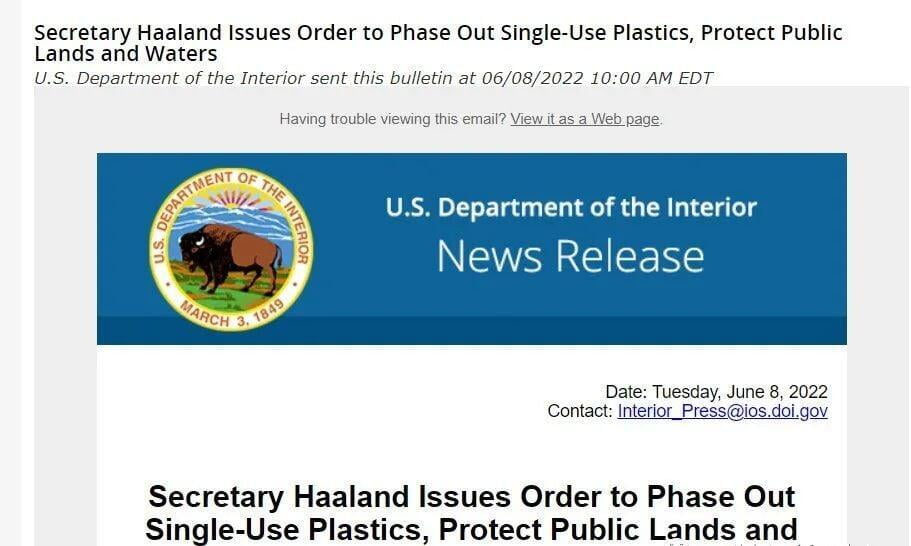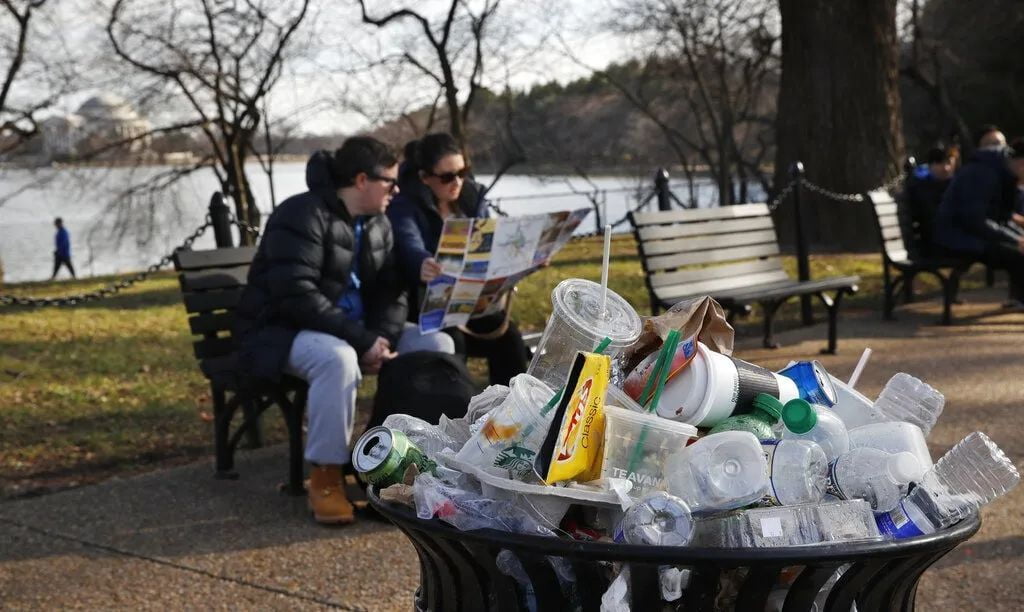The U.S. government said June 8 it will phase out the sale of plastic water bottles and other single-use products in national parks and other public lands over the next decade, aiming to completely eradicate a major source of environmental pollution.
An order issued June 8 by U.S. Interior Secretary Deb Haaland calls for the department to implement this change on more than 480 million acres of public lands, 2.5 billion acres of Outer Continental Shelf coastal waters and 750 million acres of national marine sanctuaries (20 percent of the country's lands and waters) to reduce the purchase, sale and distribution of single-use plastic products and packaging by 2032 to phase out these products and protect the public environment.

(Note: Single-use plastic products include plastic and polystyrene food and beverage containers, bottles, straws, cups, cutlery, and disposable plastic bags.)
The order directs the department to identify alternatives to single-use plastics, such as compostable or biodegradable materials or 100 percent recycled materials.

A national poll conducted by Ipsos in November 2021 found that more than 80 percent of U.S. voters would support the National Park Service's decision to stop the sale and distribution of single-use plastics in national parks.
The plastics ban is particularly important because less than 10 percent of plastics are recycled and the U.S. recycling rate is declining as China and other countries stop accepting U.S. waste, Harland said.
Of the more than 300 million tons of plastic produced each year for various applications, at least 14 million tons of plastic ends up in the ocean, from waters to deep-sea sediments, and plastic accounts for 80 percent of all marine debris found on the surface.
Plastic pollution harms people and wildlife in many ways; it makes beaches hotter during the day and colder at night, and affects the diet of young fish. Plastic has found its way into people's bloodstreams and babies' feces. It has been found in some of the most remote places in the world, including Mount Everest and, more recently, in Antarctic snow.

